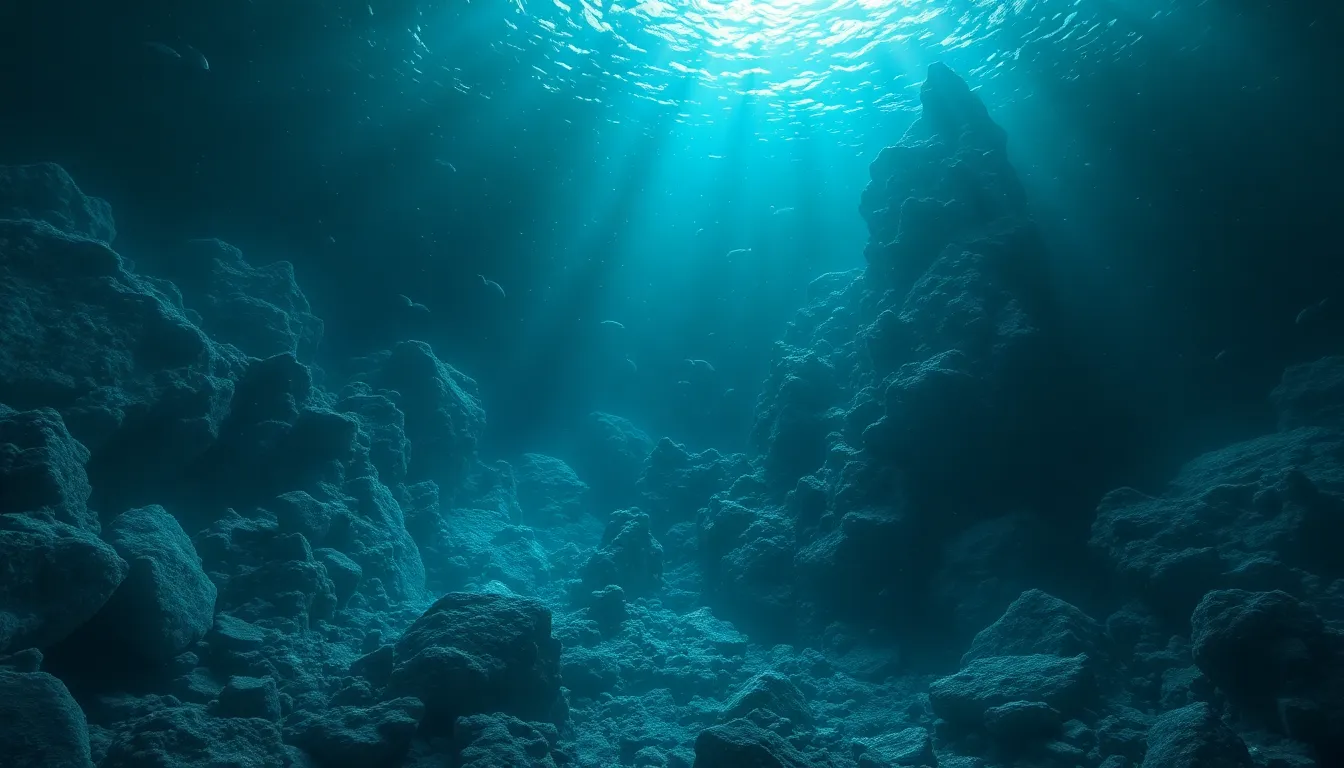The Gem of the Sea: Myths of Ocean Mysteries
1. Introduction to Ocean Myths
The ocean, with its vast expanse and unfathomable depths, has always captivated the human imagination. From its shimmering waves to its tempestuous storms, the sea embodies both beauty and danger, inspiring countless myths and legends throughout history. These narratives reflect humanity’s deep-seated fascination with the ocean, serving as a means to explain the unexplainable, explore the unknown, and understand our relationship with nature.
Myths about the ocean not only entertain but also hold significant cultural value, offering insights into how societies perceive the natural world and their place within it. They reveal our fears, dreams, and the mysteries that lie just beyond the horizon.
2. Ancient Civilizations and Their Ocean Myths
Various ancient civilizations revered the ocean, attributing divine qualities to its waters. The Greeks, for instance, worshipped Poseidon, god of the sea, who could create storms and earthquakes with a mere flick of his trident. Similarly, the Egyptians revered the Nile, which they saw as a life-giving force, often personified as the goddess Hathor.
In Polynesian culture, the ocean is a powerful entity, embodied in deities such as Kanaloa, the god of the sea, who represents the vastness and mystery of the waters. These early cultures not only revered the ocean but also crafted narratives that explained its phenomena, imparting wisdom to navigate its unpredictable nature.
3. Legendary Creatures of the Deep
The ocean is home to a plethora of legendary creatures that have captured the imagination of many. Among the most famous is the Kraken, a colossal sea monster said to dwell off the coast of Norway and Greenland. Originally a product of sailors’ tales, the Kraken has evolved into a symbol of the ocean’s ferocity, inspiring modern interpretations in books and films.
- Origins: The Kraken likely originated from sightings of giant squids and other deep-sea creatures.
- Modern Interpretations: Today, the Kraken is often depicted as an enormous octopus or squid attacking ships.
Equally captivating are the tales of mermaids and sirens, often portrayed as beautiful women with enchanting voices that lured sailors to their doom. These figures embody both seduction and danger, symbolizing the dual nature of the ocean.
4. The Bermuda Triangle: Fact or Fiction?
The Bermuda Triangle is one of the most infamous areas associated with oceanic mysteries. Encompassing the waters between Miami, Bermuda, and Puerto Rico, this region has gained notoriety for the unexplained disappearances of ships and aircraft.
Historical incidents, such as the loss of Flight 19 in 1945, have fueled speculation and theories ranging from magnetic anomalies to extraterrestrial activity. Cultural interpretations often sensationalize these events, leading to a plethora of documentaries and fictional portrayals in media.
- Notable Incidents:
- Flight 19: A group of five TBM Avenger torpedo bombers vanished in the triangle.
- The USS Cyclops: A Navy cargo ship that disappeared without a trace in 1918.
- Theories:
- Natural disasters such as hurricanes.
- Underwater methane hydrate eruptions.
- Human error and navigational challenges.
5. The Lost City of Atlantis
Perhaps the most famous lost civilization is Atlantis, first mentioned by the philosopher Plato in his dialogues “Timaeus” and “Critias.” According to Plato, Atlantis was a powerful and advanced civilization that sank into the ocean in a single day and night of misfortune.
This myth has inspired countless theories and searches for the lost city, with enthusiasts proposing locations ranging from the Mediterranean to the Caribbean. The allure of Atlantis lies in its representation of lost knowledge and the potential for discoveries beneath the waves.
6. Ghost Ships and Maritime Hauntings
Ghost ships are another enchanting aspect of maritime lore, with tales of vessels appearing mysteriously at sea, often with no crew aboard. The legend of the Flying Dutchman, a ghost ship condemned to sail the oceans for eternity, is perhaps the most famous example.
- The Flying Dutchman: Believed to be a warning of impending doom, sightings of this ship have been reported by sailors for centuries.
- Other Notable Ghost Ships:
- The Mary Celeste: An abandoned ship found adrift in the Atlantic in 1872.
- The SS Ourang Medan: A ghost ship said to carry a crew that died under mysterious circumstances.
These haunting tales illustrate how maritime folklore has shaped our understanding of the sea, blending fear and fascination into compelling narratives.
7. The Ocean as a Harbinger of Change
The ocean’s power is often reflected in myths surrounding natural disasters such as tsunamis and hurricanes. Many cultures personify the ocean as a deity capable of both creation and destruction, highlighting its unpredictable nature.
For example, in Japanese culture, the sea god Ryujin is believed to control the tides and storms, embodying the ocean’s duality. Myths surrounding the ocean often serve as cautionary tales, warning of the consequences of disrespecting nature’s power.
8. The Role of Ocean Myths in Modern Culture
Ocean myths continue to influence literature, film, and art, showcasing humanity’s enduring relationship with the sea. From classic works like “Moby Dick” to contemporary movies like “Aquaman,” these stories reflect our fascination and fear of the ocean’s depths.
- Literature: Novels often explore themes of adventure, discovery, and the unknown associated with the sea.
- Film: Movies depict oceanic myths, blending fact with fiction to create thrilling narratives.
- Art: The ocean has inspired countless artists, capturing its beauty and terror on canvas.
These adaptations highlight how ocean myths evolve, maintaining their relevance in contemporary society.
9. Scientific Perspectives on Ocean Mysteries
The intersection of myth and science offers fascinating insights into ocean mysteries. While many myths have been debunked or explained through scientific inquiry, others remain enigmatic.
Modern research continues to unveil the ocean’s secrets, revealing phenomena such as deep-sea vents and bioluminescent creatures that once fueled myths. The blending of scientific exploration and folklore enriches our understanding of the ocean, reminding us of the vast unknown that still exists.
10. Conclusion: The Enduring Allure of Ocean Mysteries
In conclusion, the allure of ocean mysteries and myths continues to resonate with humanity. These stories connect us to our past, reflecting our fears, hopes, and the inexplicable nature of the sea. As we navigate the complexities of modern life, the ocean remains a powerful symbol of the unknown, inviting us to explore its depths and uncover its secrets.
The relationship between humanity and the ocean is ongoing, reminding us of the beauty and danger that lies just beneath the surface. The myths we create and share will continue to inspire future generations to look to the sea with wonder and curiosity.



